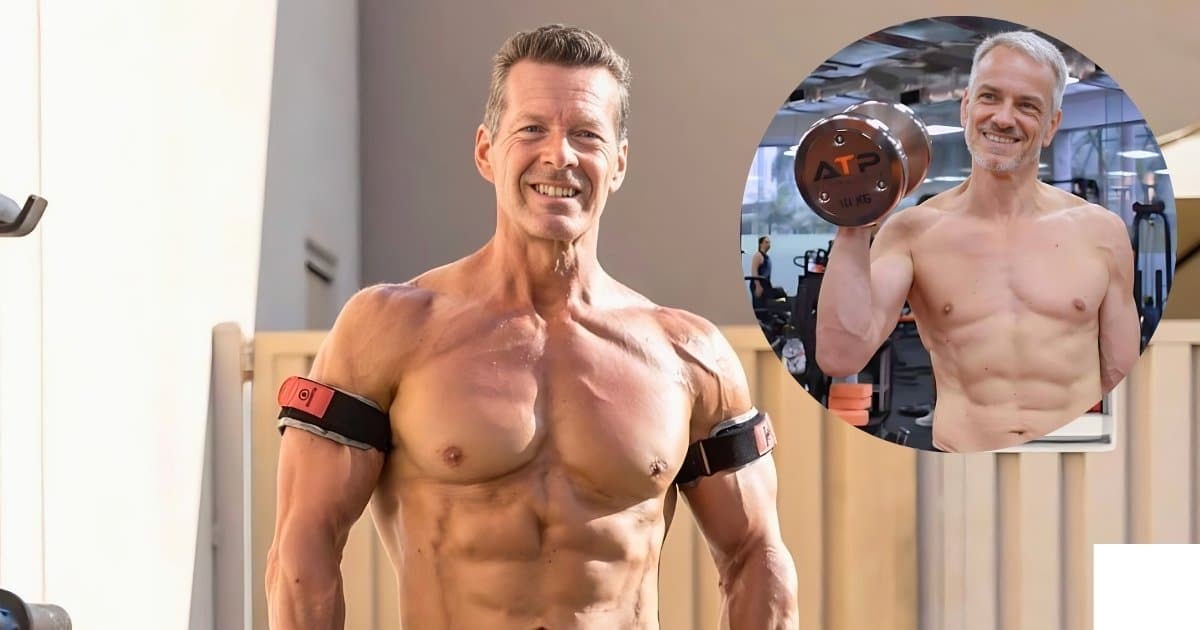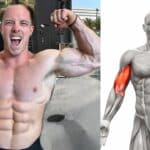Losing weight after 50 can seem tough, but it’s far from impossible.
Age changes your body, but there are smart strategies to overcome those challenges. Focus on strength training, adjust your eating habits, and you’ll see results.
These workouts are designed specifically for men over 50 and will help you drop pounds and improve your overall health.
Want to boost your metabolism and feel stronger? Read on.
Jump to:
Why Weight Loss After 50 Can Be More Challenging
As you age, your body undergoes changes that can make weight loss a bit tougher. Here’s a breakdown of the key factors:
- Slower Metabolism: Your basal metabolic rate (the number of calories your body burns at rest) naturally declines with age. This means your body needs fewer calories to function, making it harder to create the calorie deficit needed for weight loss.
- Loss of Muscle Mass: Around the age of 50, you begin to experience a natural decline in muscle mass, known as sarcopenia. Muscle burns more calories than fat, so losing muscle further slows your metabolism.
- Hormonal Changes: Both men and women experience hormonal shifts as they age. In women, decreasing estrogen levels can lead to increased belly fat storage. Men may experience a dip in testosterone, making it harder to build muscle.
- Lifestyle Factors: Life after 50 can bring potential obstacles like increased stress, reduced sleep quality, and less time to prioritize exercise. These factors can contribute to weight gain.
Strategies for Success
While weight loss may take more effort after 50, it’s definitely not impossible! Here’s how to address these challenges:
- Focus on Strength Training: Prioritize exercises that build muscle, such as lifting weights, using resistance bands, or bodyweight exercises. Increased muscle mass will boost your metabolism and help counteract age-related muscle loss.
- Adjust Your Calorie Intake: With a slower metabolism, you may need to be more mindful of how much you’re eating. A nutritionist or registered dietitian can help you determine the optimal calorie intake for your goals.
- Emphasize Protein: Protein helps preserve muscle mass and keeps you feeling full. Include lean protein sources like chicken, fish, beans, and tofu in your meals.
- Manage Stress: Find healthy ways to manage stress, such as exercise, meditation, or spending time in nature. High stress levels can lead to weight gain.
- Prioritize Sleep: Aim for 7-8 hours of quality sleep each night. Sleep deprivation can disrupt hormones that regulate hunger and metabolism.
Key Benefits of Regular Workouts
Regular physical activity not only contributes to weight loss but also enhances overall health, improving cardiovascular fitness, muscle tone, and mental well-being. The key is to adapt the intensity and volume of workouts to suit individual fitness levels and body responses. This personalized approach ensures that each participant finds their optimal balance for effective results.
Featured Weight Loss Workouts
1. Kettlebell Swing
Position your feet shoulder-width apart and perform a squat to grasp a kettlebell with both hands. Propel the kettlebell to head height by engaging your core, maintaining a flat back and a focused gaze forward. Aim for a duration of 30-45 seconds per set.
2. Kettlebell Squat Press
Start by holding kettlebells in both hands at shoulder height. Perform a squat, then stand and extend your arms fully to press the kettlebells above your head. This exercise combines strength training with endurance.
3. Burpee
Begin in a plank position, jump your feet to a squat position, then leap up to extend your body fully. Return to the plank and repeat. Execute this dynamic movement for 30 seconds.
4. Mountain Climbers
From a plank position, rapidly alternate driving your knees towards your chest, mimicking a running motion while keeping your hands stationary. Continue for at least 30 seconds.
5. Jump Squat
Stand with feet hip-width apart, perform a squat, then explosively jump upwards. Land softly and repeat. Conduct 20-30 jumps per session.
6. Rowing
Secure yourself on a rowing machine, pull the handles towards your chest while extending your legs, then return to the starting position smoothly. This exercise is excellent for full-body engagement.
7. Battle Ropes
Hold the ends of a heavy rope anchored securely. Whip or slam the ropes dynamically using your arms and core, creating waves or performing slams for high-intensity bursts.
Bonus: Weight Loss Workouts Without Using the Gym
Walking
Begin with a simple, daily 30-minute walk. Choose scenic routes to keep the activity enjoyable and engaging.
Biking
Biking offers an excellent low-impact cardio workout that’s easy on your joints. Choose from leisurely rides to intense hill climbs, tailoring the intensity to your fitness level. Biking engages major muscle groups like your quads, glutes, and core, building strength and endurance.
Jogging/Running
Incorporate running or jogging into your routine, starting with short bursts and gradually increasing the duration as your stamina improves.
Swimming
Swimming offers a low-impact but effective workout, utilizing water resistance to enhance muscle strength and cardio fitness.
HIIT
High-Intensity Interval Training (HIIT) involves short, intense bursts of exercise followed by brief rest periods. This method is known for burning a high number of calories in a short time.
Yoga
Yoga not only helps with weight loss but also improves flexibility and core strength. It involves various postures and breathing techniques that enhance physical and mental wellness.
Additional, Science-Backed Ways to Lose Weight
Moderate Caloric Restriction and Regular Exercise
Intentional weight loss with moderate caloric restriction coupled with regular aerobic and resistance exercise can improve metabolic health and reduce disabilities in obese older adults, without exacerbating lean mass and bone mineral density loss (Darmon, 2013).
Dietary Changes
Increasing the intake of vegetables and reducing energy and fat intake have been shown to effectively promote weight loss. This strategy can also help maintain weight loss over the long term (Tanumihardjo et al., 2009).
Daily Self-Monitoring
Daily tracking of body weight, physical activity, and diet (including fruit/vegetable intake and water consumption) has been found effective in maintaining weight loss among older adults (Akers et al., 2012).
Individualized Approaches
Tailoring weight loss interventions to consider life expectancy, chronic comorbidities, functional status, personal motivation, and social support is critical for older adults, especially those over 80 years or those who are frail (Chau et al., 2008).
Conclusion
Integrating these exercises into your daily routine, alongside maintaining a balanced diet and a supportive community, can dramatically improve your health and facilitate weight loss.
Commitment to this regimen is crucial for achieving and maintaining optimal results. Here’s to taking a powerful step towards a healthier and more fulfilling lifestyle!














